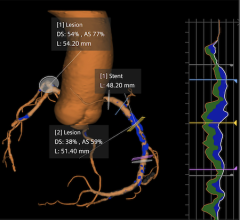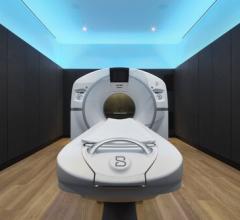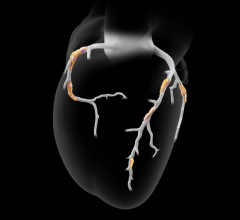November 27, 2007 - GE Healthcare announced at RSNA 2007 it will incorporate High-Definition (HD) technology in its next generation of computed tomography (CT) scanners, which will increase spatial resolution by 30 percent, will acquire images 100 times faster than dual source technology currently in the marketplace and lower dose by 50 percent across the entire body.
Embracing the philosophy that simply adding more slices or X-ray sources does not improve image clarity, GE engineers are revamping the X-ray tube through the detector and data acquisition system. As a new foundation, the new CT detector will use a new scintillator material derived from garnet gemstone and modified by GE Healthcare engineers to create a material that significantly accelerates X-ray conversion speed and other qualities required to support step-function improvements in spatial resolution.
The HDCT imaging chain prototype involves switching the kVp of the X-rays from 80 kVp to 140 kVP and back in less than 1.0 msec, enabling dkVp acquisitions with temporal registration approximately 150 times better than those obtained by current technology.
The company is also working to extend the capabilities for Volara Digital Acquisition System (DAS) by boosting its sampling speed to reportedly more than double that of anything on the market today, while maintaining low signal performance for dose efficiency.
By combining profiles used in an iterative manner to extract additional image clarity and suppress noise with ongoing industry advances in computing power, these adaptive statistical iterative reconstruction (ASIR) algorithms are showing considerable promise, according to the company, in providing images of higher clarity and at a lower patient dose, while maintaining reasonable diagnostic workflows for reading physicians.
For more information: www.gehealthcare.com


 December 03, 2025
December 03, 2025 









